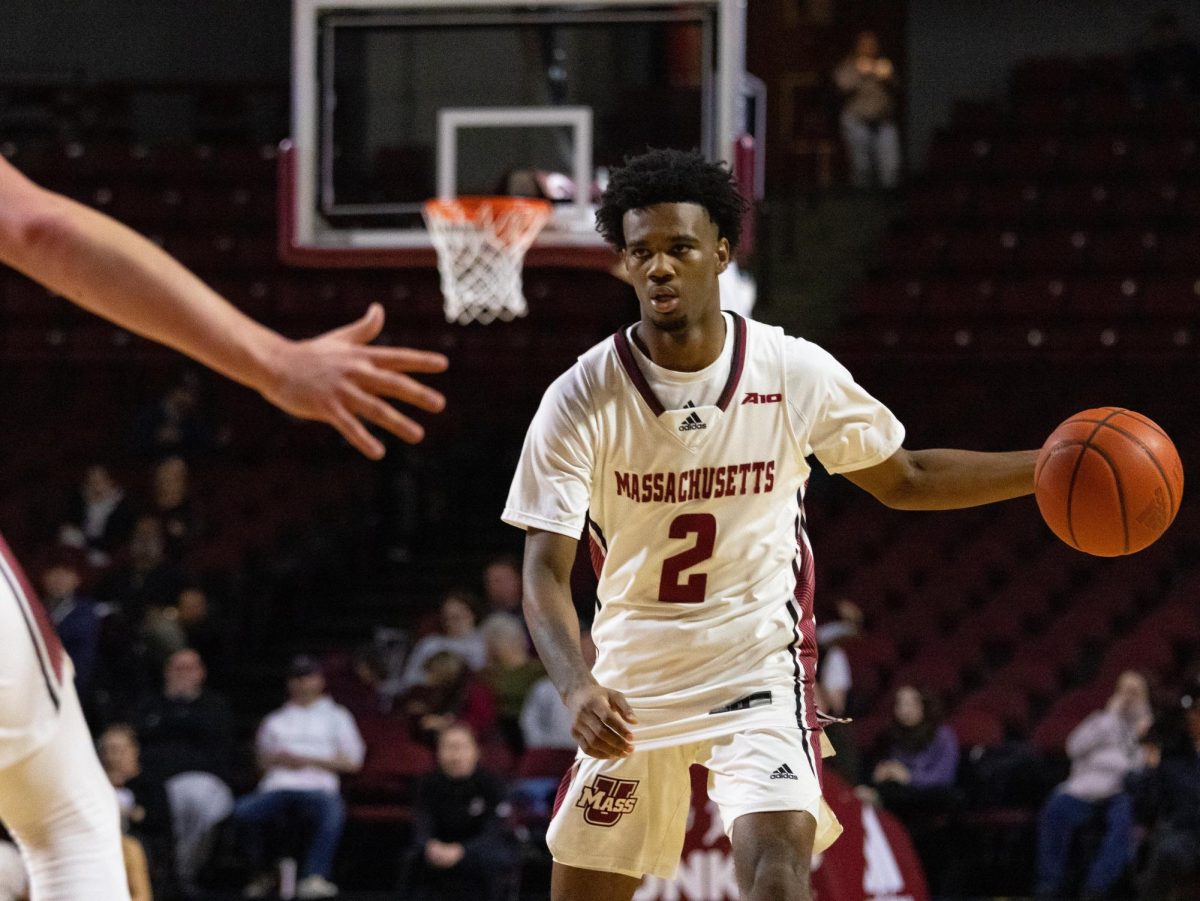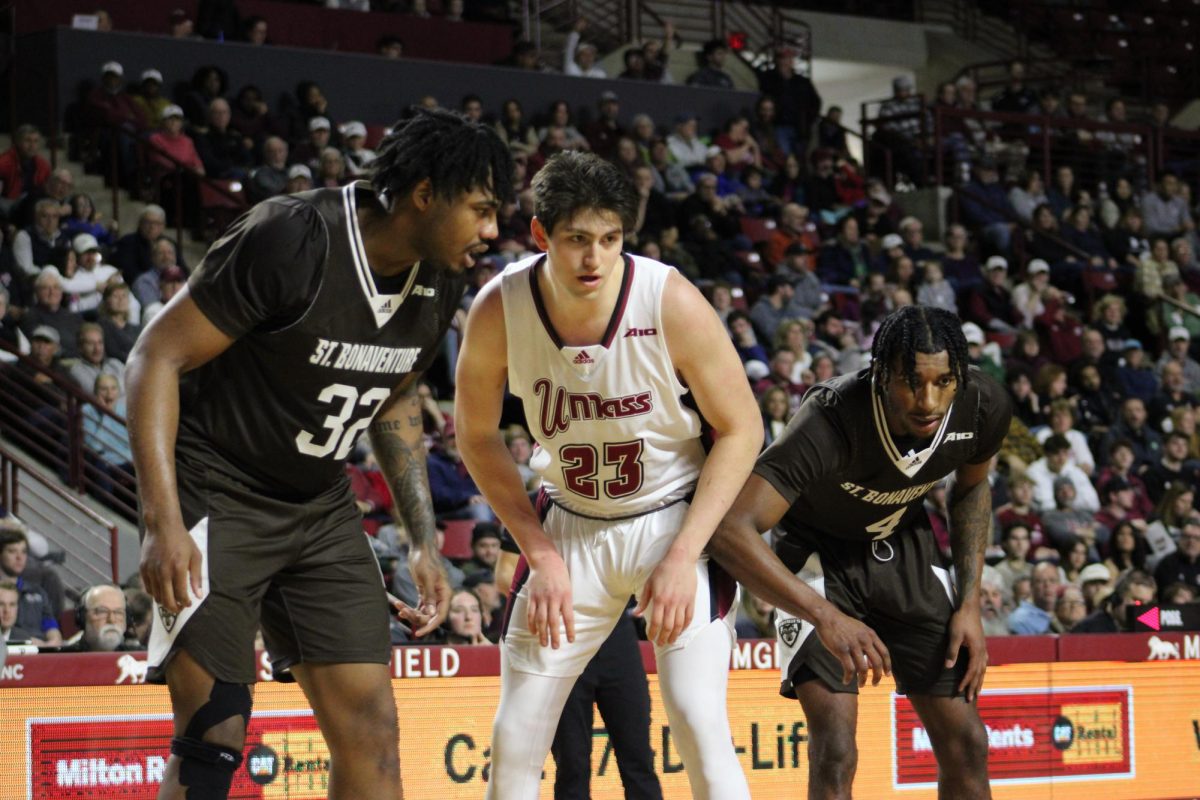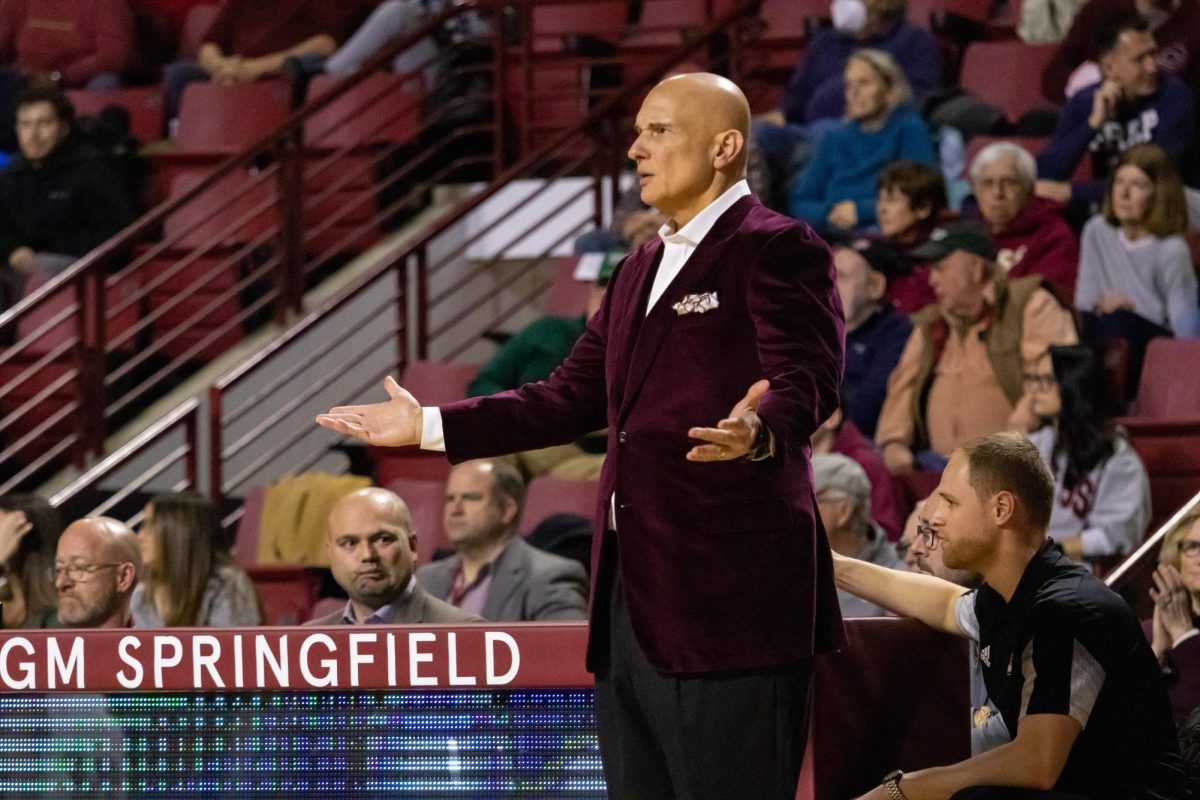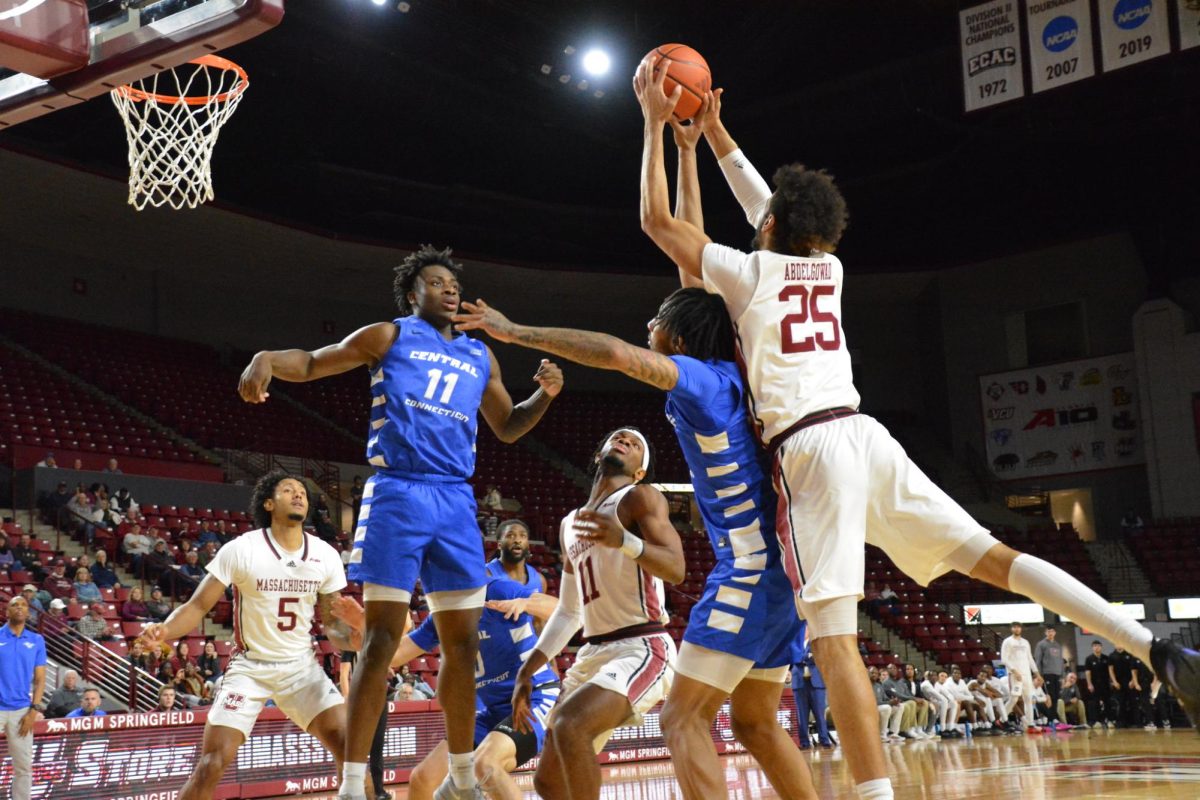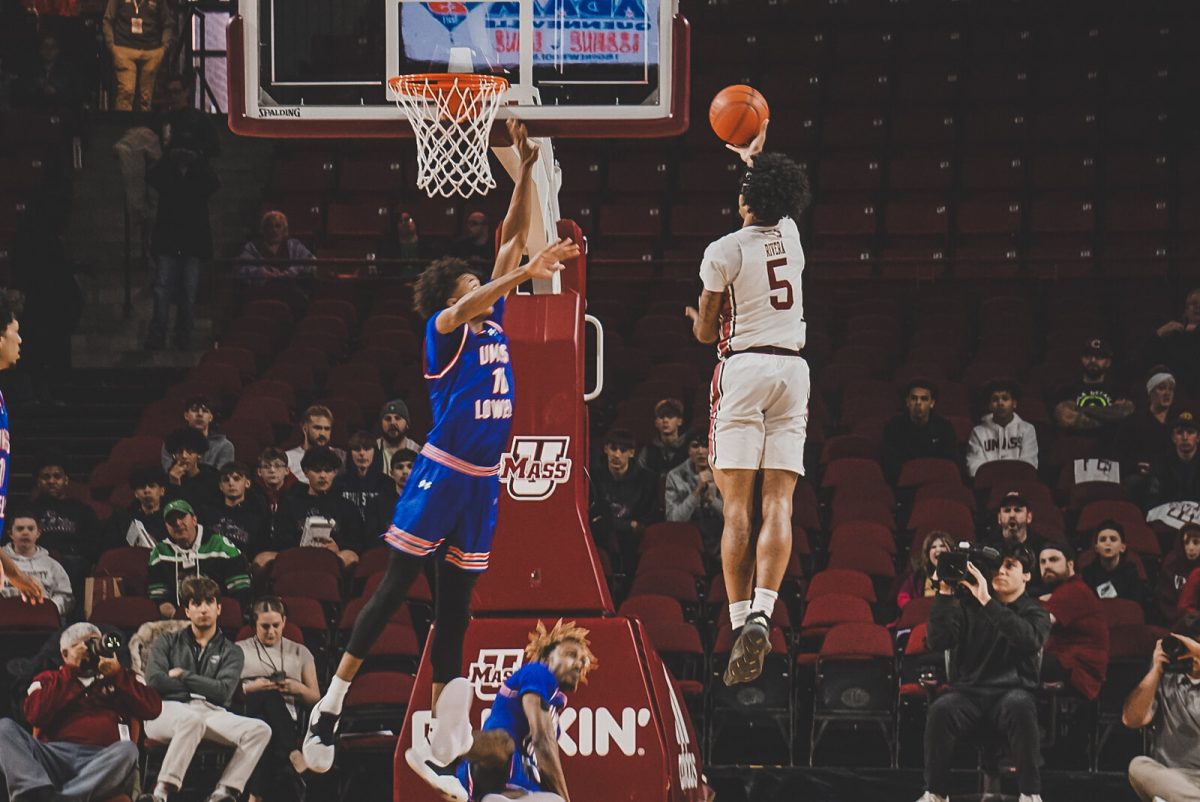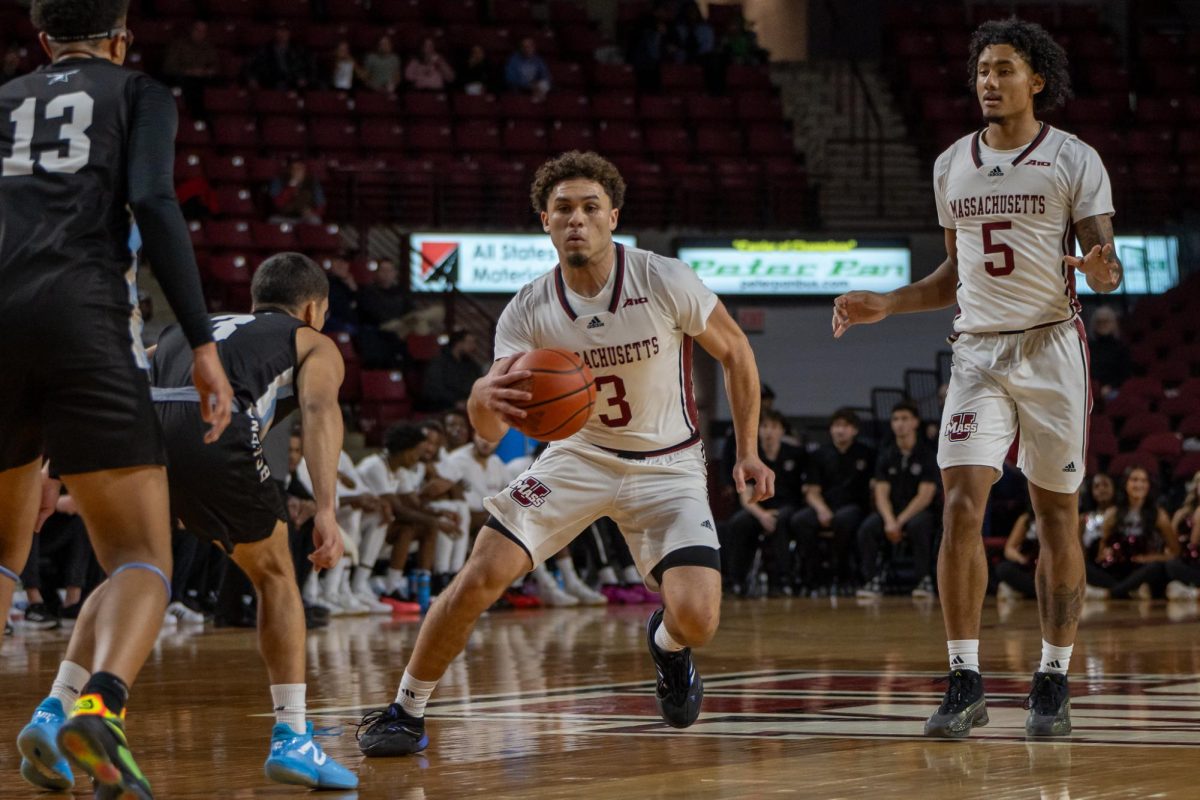
On a crisp Saturday afternoon, fans flood into Mullins Center to watch the Massachusetts men’s basketball team play the Central Florida as the Minutemen’s five-game winning streak has students particularly amped for this contest.
The atmosphere remains vibrant for the whole game, from the player introductions through the final horn that sounds just after UCF’s Nick Banyard hits a game winning 3-point shot with less than one second remaining. Less enthusiastic at this point, fans exit and workers linger around until the lights are shut off roughly an hour after the game.
While Dec. 3 was a loss for the UMass basketball team, there was a larger victory for the University behind the scenes. Between arena renovations and renewable energy projects, the UMass athletic department has developed into a model of sustainability. Over the past three years, officials addressed both how much energy is used and where it comes from.
Mullins Center General Manager Brian Caputo credits several different projects as how they have accomplished that.
“The biggest thing really is the LED lights,” Caputo said. “We have actually been able to cut our electricity bill probably about 50 percent for game days.”
That project transitioned the arena lighting to more efficient LED bulbs in the summer of 2014. Since then, similar efforts have become a trend UMass Athletics has continued through this semester with the expansive solar farm project, which included outfitting each light post in the Mullins Center’s parking lot with a solar panel.
After addressing the energy costs of the arena lighting, the Mullins officials took a look at water consumption. With two main bathrooms, they had a clear target to reduce how much the arena uses during events. Often the largest area of water waste, these bathrooms provided the greatest opportunity for conservation.
“A year after we finished the light renovations, we had our bathrooms renovated as well; the two biggest ones on the concourse at the east and west ends,” Caputo said. “The sustainability efforts on those sides have actually lowered our water use by about 35-40 percent so were now saving a lot more on water use per game days or any events for that matter.”
Between those two projects, Mullins Center has slashed its utility costs by reducing energy consumption and has operated more efficiently as a result. Not only did the lighting renovation reduce the cost of each bulb, but also cut back the number of lights used from 250 to 124, according to Caputo.
Much like the consumption of energy has improved inside where the different events are held, the energy production side of sustainability is on display in the immediate vicinity of Mullins. On top of the John Francis Kennedy Champions Center, as well as in parking lots 12 and 25, solar panels have become a prominent fixture under the supervision of Design and Construction Management Assistant Director John Mathews.
As part of the larger operation that concluded last month, Brightergy LLC and Con Ed solutions outfitted Lots 12 and 25, as well as the Champions and Recreation Centers with high impact solar production equipment.
“These locations are huge,” Mathews said. “It’s probably around 45 percent of the total electric output of the solar energy systems that we built.”
This energy production has permitted self-sustaining energy consumption for those two training centers. As the cells bring in energy from the sunlight it travels down into generators within the buildings that support its energy usage.
“The Recreation Center and the Champions Center are principally run off solar power now during the day,” Mathews said.
In their first year of operation, University officials expect these locations to produce about 2.46 million Kilowatt-hours in AC current. At almost half of the cumulative solar energy production of the campus, this is roughly equivalent to the annual electric energy consumption of 352 residential homes in Massachusetts, according to the U.S. Energy Information Administration.
While the fixtures on top of the two structures help sustain their consumption, lot 25 will help provide the entire University with clean energy.
So when the Minutemen welcome rivals into Mullins Center, when they train and watch game tape in preparation for those games in the Champions center,and when fans park their cars in the event parking lot, it is all being done in a far more environmentally friendly manner than in years past.
Win or lose, there are responsible energy practices taking place in the midst of athletic contests and other events.
Chris Marino can be reached at [email protected].

